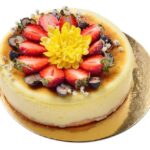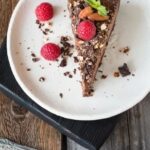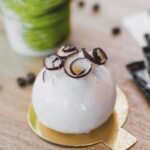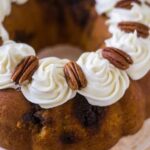How to decorate layer cake is a skill that combines both creativity and precision. The process of transforming a simple cake into a stunning work of art involves essential tools, thoughtful planning, and attention to detail. With the right techniques and guidance, you can create beautifully decorated layer cakes for any occasion. In this article, we will explore the world of layer cake decorating, from choosing the perfect cake to adding the final touches for a show-stopping presentation.
Layer cake decorating is more than just frosting and sprinkles; it’s an opportunity to showcase your artistic talents and express your creativity through edible masterpieces. Whether it’s for a birthday, wedding, or special celebration, a beautifully decorated layer cake can be the centerpiece of any event.
This article will provide you with a comprehensive guide on how to decorate layer cakes like a professional, covering everything from essential tools and ingredients to different decorating techniques and expert tips for flawless execution.
By learning the art of decorating layer cakes, you’ll have the skills and knowledge to create visually stunning desserts that are not only delicious but also visually captivating. From choosing the right cake flavors to adding those final touches that elevate your creation, this article will equip you with everything you need to know about creating beautiful layer cakes that are sure to impress.
Essential Tools and Ingredients
When it comes to decorating a layer cake, having the right tools and ingredients is essential to achieving a professional-looking result. Whether you are a beginner or an experienced baker, there are certain items that are necessary for creating a beautifully decorated cake. Here are some of the essential tools and ingredients needed for decorating a layer cake:
1. Piping Bags: Piping bags are indispensable for adding decorative elements to a cake, such as frosting borders, lettering, intricate designs, and more. There are disposable piping bags available, but having a reusable one is also a great investment.
2. Tips: Paired with piping bags, tips come in various sizes and shapes that allow for different types of decorations. From classic round tips to star-shaped tips and specialty tips for creating specific designs, having a variety of tips in your collection can help you achieve diverse decorating styles.
3. Offset Spatula: An offset spatula is useful for spreading frosting or ganache evenly on the cake layers and achieving smooth finishes. It’s also handy for lifting and maneuvering delicate fondant decorations.
4. Fondant: Fondant is a versatile ingredient that can be rolled out to cover the entire cake or shaped into decorative elements such as flowers, ribbons, and figurines. It provides a clean canvas for creative designs and can give cakes a polished look.
5. Icing: Whether it’s buttercream, cream cheese frosting, royal icing, or any other type of icing, having the right consistency is crucial for decorating purposes. Different icings offer different textures and applications in decorating layer cakes.
Including these essential tools and ingredients in your baking arsenal will set you up for success when it comes to embellishing your layer cakes with stunning decorations. Be sure to invest in quality items that will make the decorating process smoother and more enjoyable.
Choosing the Right Cake
When it comes to decorating a layer cake, choosing the right type of cake is crucial to ensure that your creation not only looks beautiful but also tastes delicious. Different types of cakes offer different textures and flavors, making them better suited for layering and decorating.
Vanilla Cakes
Vanilla cakes are a classic choice for layer cakes due to their versatility. They provide a neutral base that can be paired with a wide variety of fillings and icings. The light, airy texture of vanilla cake layers also makes them easy to work with when stacking and decorating.
Chocolate Cakes
For chocolate lovers, a rich and moist chocolate cake is an excellent option for layering and decorating. Chocolate cakes provide a bold flavor that can stand up to sweet or tangy fillings and icings, making them a popular choice for special occasions.
Red Velvet Cakes
Red velvet cakes offer a unique visual appeal with their vibrant red color, making them an eye-catching choice for layered cakes. Their subtle cocoa flavor and slightly tangy taste pair well with cream cheese icing, creating a delightful combination that is perfect for special celebrations.
In addition to these options, other popular choices for layer cakes include carrot cake, lemon cake, and chiffon cake. When choosing the right cake for your layered creation, consider the flavor preferences of your audience as well as the compatibility of the cake with your chosen fillings and decorations.
Layering and Filling
Before layering and filling your cake, it’s important to ensure that your cakes are leveled. Using a long serrated knife or a cake leveler, carefully trim off the domed area from the top of each cake layer to create a flat surface. This will help prevent any wobbling or sliding of the layers once stacked.
Once your cakes are leveled, you can begin stacking them on top of each other with your chosen fillings in between. It’s best to place the bottom layer on a cardboard round or directly onto your serving platter, to make it easier to transfer once assembled. After placing a dollop of filling on the first layer, use an offset spatula to gently spread it evenly over the surface. Repeat this process with remaining layers until all are stacked.
For more advanced techniques like creating multiple layers within one tier or adding different fillings to each layer for added variety and flavor, consider using dowels or cake rods to provide support for your cake during assembly. These can be trimmed to size and inserted into the filled tiers before stacking additional layers on top.
| Layering and Filling Tip | Details |
|---|---|
| Leveling Cakes | Use a long serrated knife or cake leveler to trim off any domed areas from the top of each cake layer. |
| Stacking Layers | Ensure stability by placing bottom layer on cardboard round or serving platter and use dowels for multi-layered cakes. |
| Filling Technique | Gently spread filling evenly over each layer using an offset spatula for consistent coverage. |
Crumb Coating
To achieve the perfect crumb coat, you will need the following tools and ingredients:
- Offset spatula
- Piping bag and piping tips (optional)
- Icing or frosting of your choice
- Chilled cake layers
The process of crumb coating involves the following steps:
- Start by placing one layer of cake on a cake board or plate.
- Using an offset spatula, carefully spread a thin layer of icing or frosting over the top of the cake layer, ensuring that it covers the entire surface.
- Once the top is coated, add another layer of cake on top and repeat the process until all layers are stacked.
- Apply a thin layer of icing or frosting around the sides of the stacked cake, making sure to cover all exposed surfaces.
- Use the offset spatula to smooth out the icing or frosting, creating an even coat around the entire cake.
By taking your time with this process and paying attention to detail, you can ensure that your crumb-coated cake will have a professional-looking finish that provides a solid foundation for your final decorative touches.
Once you have successfully applied the crumb coat, allow it to set in the refrigerator for at least 30 minutes to firm up before adding another layer of decorative icing or fondant. Remember that patience is key when crumb coating, and taking your time at this stage will result in a beautifully decorated layer cake.
Different Decorating Techniques
When it comes to decorating a layer cake, there are numerous techniques that can take your cake from ordinary to extraordinary. Each technique offers its own unique look and style, allowing you to get creative and customize your cake to suit any occasion.
Piping
Piping is a classic decorating technique that involves using a piping bag and various tips to create intricate designs with frosting. It allows for the creation of beautiful borders, elegant rosettes, delicate flowers, and personalized messages on the cake’s surface. Piping is a versatile technique that can be used with buttercream, royal icing, or whipped cream, offering endless design possibilities.
Fondant Covering
Fondant covering is a popular choice for creating smooth and flawless finishes on layer cakes. Fondant is a pliable sugar paste that can be rolled out and draped over the cake for a seamless look. It provides a clean canvas for adding additional decorations such as hand-painted designs, embossed patterns, or sculpted 3D elements.
Chocolate Ganache Drizzling
Drizzling chocolate ganache over a layer cake adds decadence and richness to the dessert. The glossy finish of the ganache creates an indulgent appearance that is perfect for special occasions. Whether poured over the top of the cake or allowed to cascade down the sides, chocolate ganache drizzling adds a luxurious touch to any layered confection.
Sprinkles and Edible Flowers
For a fun and vibrant decorative touch, sprinkles can be added to layer cakes in various colors, shapes, and sizes. They provide texture and visual interest while showcasing a playful aesthetic. Alternatively, adorning cakes with delicate edible flowers brings natural beauty and elegance to any celebration. Edible flowers come in an array of colors and flavors, allowing for stunning presentations that are both eye-catching and delectable.
With these different decorating techniques at your disposal, you can transform any layer cake into a work of art that is sure to impress both visually and gastronomically.
Decorating Tips and Tricks
Decorating a layer cake can be a fun and rewarding experience, but it can also be challenging, especially when it comes to getting that smooth, flawless icing and creating intricate designs. However, with the right tips and tricks, you can achieve professional-looking results right in your own kitchen.
When it comes to achieving smooth icing on your layer cake, one key tip is to ensure that your buttercream or fondant is at the right consistency. If the icing is too stiff, it will be difficult to spread smoothly, while if it’s too soft, it will slide off the cake.
Another important tip is to do a crumb coat first before applying the final layer of icing. This will help seal in any loose crumbs and create a clean base for your final decoration.
Creating intricate designs on a layer cake can seem daunting, but with some simple techniques, it becomes much more manageable. One effective way to add detail to your cake is by using piping bags with different tips to pipe out designs such as rosettes, swirls, or lattices. Additionally, using stencils or molds can help you create impressive patterns and shapes on your cake without needing advanced decorating skills.
Lastly, even with all the preparation and care taken during the decorating process, mistakes can happen. Whether it’s a smudged design or an uneven icing job, there are ways to fix these mishaps without starting from scratch. For example, using an offset spatula dipped in hot water can help smooth out bumpy areas in the icing. Additionally, covering up small mistakes with decorative elements like edible flowers or piped borders can divert attention away from imperfections.
| Decorating Tips | Tricks |
|---|---|
| Ensure buttercream/fondant at right consistency | Use piping bags with different tips for designs |
| Do a crumb coat before adding final layer of icing | Use stencils/molds for impressive patterns |
| Smooth out mistakes with hot water-dipped offset spatula | Cover up imperfections with decorative elements |
Final Touches and Presentation
In conclusion, decorating a layer cake is truly an art form that can turn a simple dessert into a stunning centerpiece for any occasion. By understanding the essential tools and ingredients, choosing the right cake, mastering layering and filling techniques, perfecting the crumb coating, and exploring different decorating techniques, anyone can create a visually appealing and delicious masterpiece. The final touches and presentation of the cake are what elevate it from beautiful to breathtaking.
Adding edible glitter, fresh fruit, decorative toppers, or even personalized messages can take the cake to the next level. These final touches not only enhance the visual appeal but also add flavor and texture to the overall experience.
Additionally, how the cake is presented plays a crucial role in its impact. Whether it’s on a beautifully decorated cake stand or as part of an elaborate dessert spread, presentation can make all the difference in showcasing your hard work and creativity.
Ultimately, mastering the art of decorating a layer cake comes with practice and patience. Each step, from choosing the right tools to putting on those final touches, contributes to creating a show-stopping dessert that will impress any audience. With dedication and a passion for creativity, anyone can become skilled at turning an ordinary cake into a masterpiece worthy of celebration.
Frequently Asked Questions
How Do You Layer a Cake on Top of Each Other?
Layering a cake on top of each other involves placing one cake layer on a flat surface, adding a filling or frosting, then carefully placing the second layer on top. It’s important to ensure that the layers are evenly aligned and that any excess filling is smoothed out before stacking.
What Do You Put in the Middle of a Layer Cake?
The middle of a layer cake is typically filled with frosting, fruit preserves, pudding, or even chopped nuts. This not only adds flavor but also helps to keep the layers moist and adhere them together.
How to Decorate a Cake for Beginners?
For beginners, decorating a cake can be made simpler by using pre-made decorations like edible flowers or sprinkles. Another beginner-friendly technique is to use a spatula to create swirls or texture in the frosting.
Piping simple designs with buttercream icing can also be an easy way to add decorative elements to a cake. Practice and experimentation will help build confidence and skill in cake decorating for beginners.

Welcome to my blog about home and family. This blog is a place where I will share my thoughts, ideas, and experiences related to these important topics. I am a stay-at-home mom with two young children. I hope you enjoy reading it! and may find some helpful tips and ideas that will make your home and family life even better!





